The best ski goggles of 2023, tested by editors
Content is created by CNN Underscored’s team of editors who work independently from the CNN newsroom. When you buy through links on our site, CNN and its syndication partners may earn a commission. Learn more
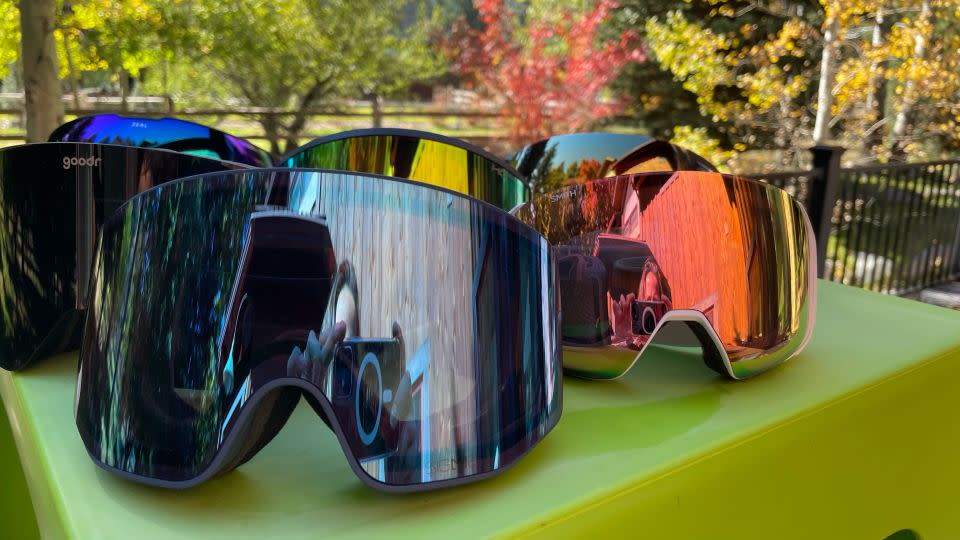
Ski goggles are not what they used to be — and that’s a really good thing.
As a kid in the 1980s in Colorado, my family skied a lot and I vividly remember my goggles. The foam was so thin that the plastic frame occasionally nicked my face, the lenses were constantly smudged and scratched and the lens lighting never seemed to work, regardless of the conditions. They protected my eyes from the elements — and that was about it.
But today, ski goggles are a modern marvel. Now we have various frame shapes to fit different face profiles, interchangeable lenses and laser-sharp optics that are clear enough to read the bottom line on an eye chart. Some even come with bougie cases to protect your investment (because yes, they’re also more expensive now). Ski goggles still protect your eyes, but they aren’t just functional; they’re a statement.
Ski season is coming in hot, so we wanted to find the best ski goggles for you to wear when hitting the slopes this year. To do that, we spent over 2.5 hours pedaling on our Peloton in goggles (just go with it), strapped them on a bunch of different heads and wore them around the house with a variety of ski helmets. We even timed our lens swaps with interchangeable lenses to see which goggles would have you on the ski hill the fastest. And when it was all done and dusted, we found the best. Here are the three ski goggles that topped our testing.
Salomon Sentry Prime Sigma Photochromic
Best ski goggles overall
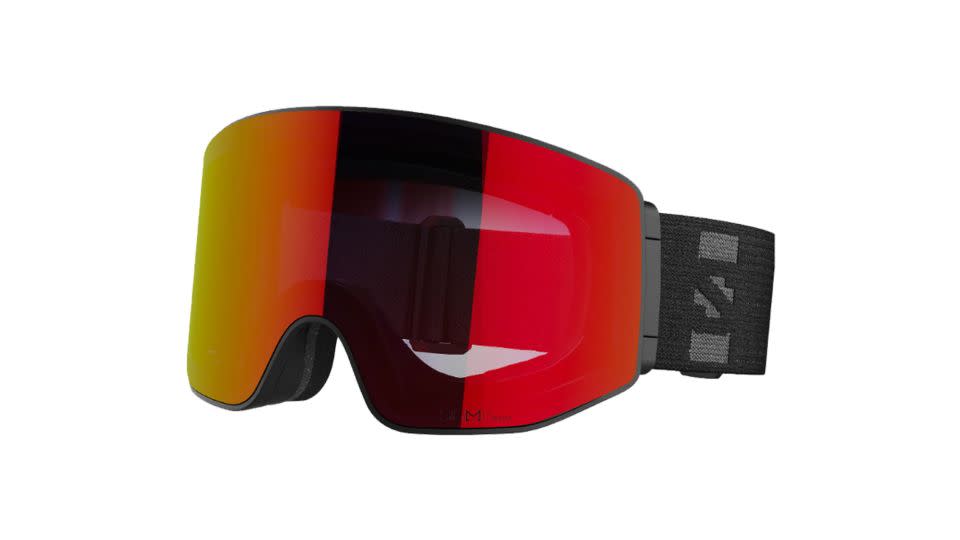
Salomon is an old pro when it comes to ski gear, so it’s no surprise that the Sentry Prime Sigma Photochromic goggles crushed our testing process with a pleasing universal fit, superb vision and clarity and a surprisingly delightful magnetic lens protector (the only one in our testing pool).
Smith Optics 4D Mag S
Best ski goggles for small faces
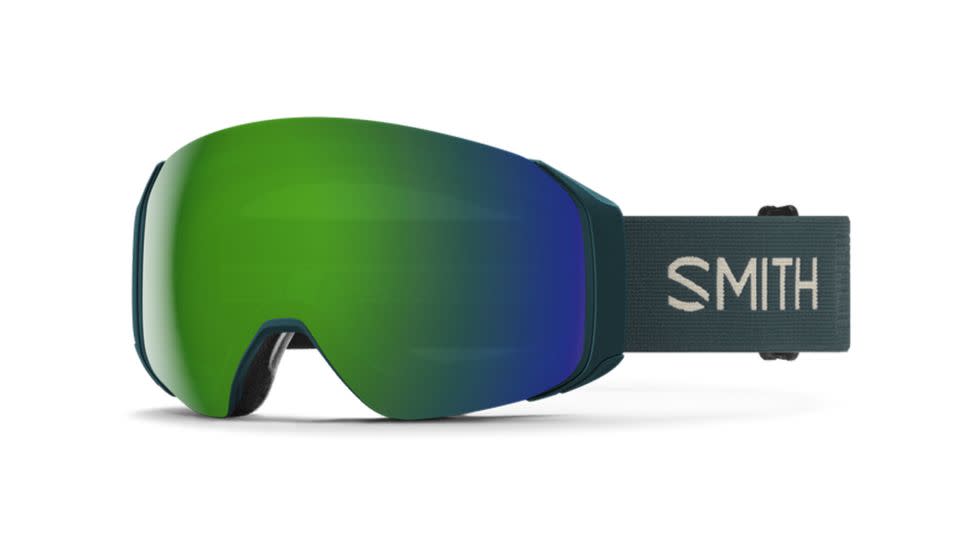
The Smith 4D Mag S give you the whole package: an insanely huge field of vision, clear optics and tons of color options to earn those style points. And a trim design and flexible frame mean skiers with small faces and features don’t have to worry about drowning in their goggles.
$320 at Smith Optics
$320 at REI
Goodr Snow G
Best budget ski goggles
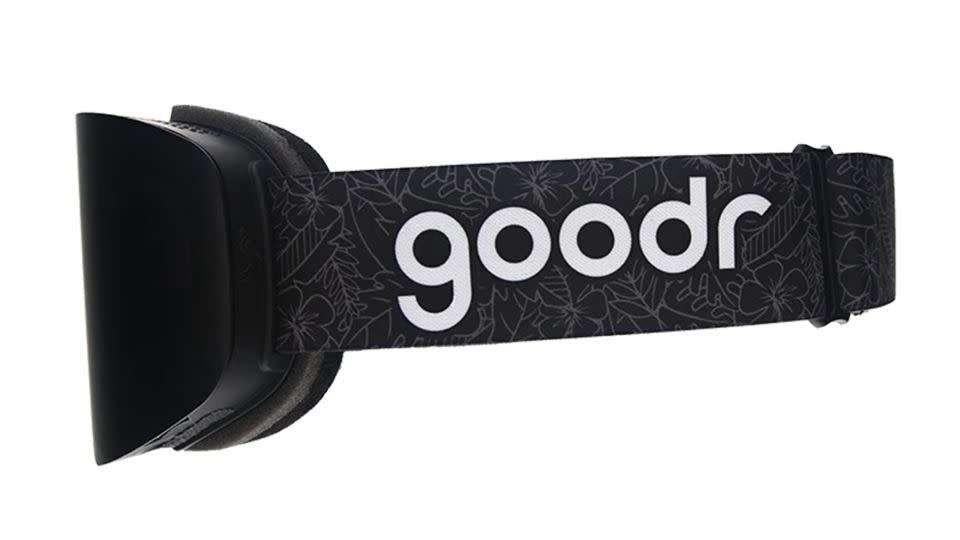
We love a good value, and the Goodr Snow G ski goggles knocked it out of the park with a decent field of vision, easily interchangeable lenses and a high-quality hard-sided case to house everything. The best part: They’re the most affordable goggles in this test.
Best ski goggles overall: Salomon Sentry Prime Sigma Photochromic
$230 at Salomon
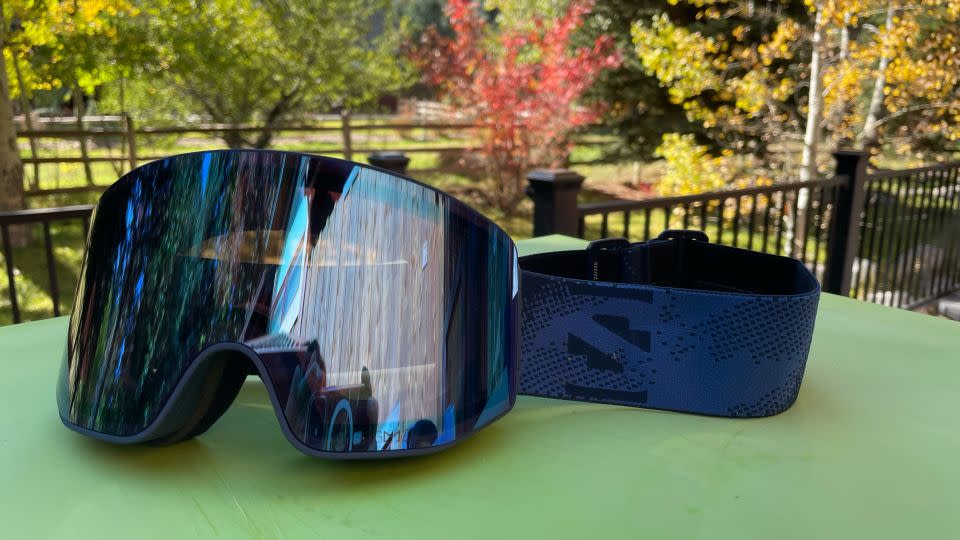
Above all else, ski goggles need to protect your eyeballs and help you see while carving through the snow. The Sentry Prime Sigma do all of that with amazing clarity and a wide field of vision that helps you see what’s happening in your periphery. While they do come in limited colorways, we found that to be small peanuts compared to the overall quality and experience of these goggles.
To start, the Sentry Prime Sigma come with two lenses: a photochromic lens and a regular low-light lens. Both of these boast Salomon’s Sigma technology, which claims to boost color contrast on the snow so that you can easily see terrain variations and features. We couldn’t rely on even snow conditions during testing, so we took all of our ski goggles on multiple walks through a multitude of full-sun and shade environments. Each time, we were delighted by the clarity and defined contrast on the Salomon goggles; in this regard, they tied for the top spot alongside the Smith 4D Mag S goggles.
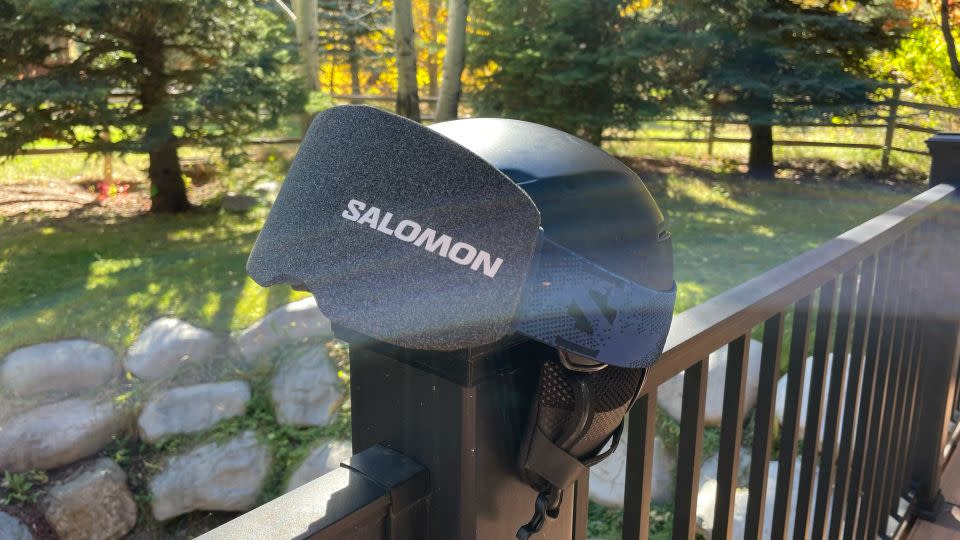
The best part: The photochromic lens makes that contrast pop even further while also adjusting to various conditions. We specifically took the Sentry Prime Sigmas for a hike along a trail with dappled light and were pleasantly surprised by how quickly the goggles adjusted to the changing conditions. In testing, the lens adjustment took less than 10 seconds. Most of the other goggles in our testing pool do not have photochromic lenses, so this quick change was a huge bonus since it’s so efficient. Caveat: There was a smidgen of glare in extra bright conditions. The Sentry Prime Sigma goggles have a cylindrical lens that curves from left to right across your eyes but is vertically flat from top to bottom. Sun glare is more common with cylindrical lenses, but they are also more affordable. In this case, it’s a trade-off we’re happy to make.
The goodness didn’t end there, though. No one likes sweat in their eyes, so we took it upon ourselves to hop on a Peloton bike for 10 minutes while wearing our goggles to see how well they actually breathe in a controlled environment. While none of the goggles feel as breezy as bare skin, the Sentry Prime Sigmas did a great job at managing body heat. Most of the higher-end goggles had decent ventilation, but the Salomons were near the top of the pack, breathing better than some of the goggles at higher price points. I never once felt sweat dripping inside the goggles and I totally avoided that clammy and claustrophobic feeling that happens when ventilation doesn’t exist.
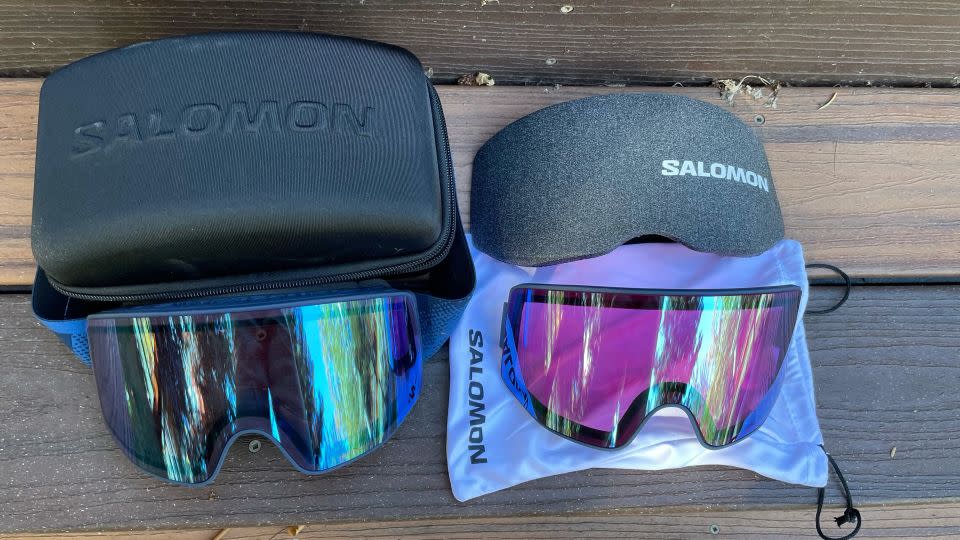
While the interchangeable lenses weren’t as easy as on the Burton Anon M5S goggles, I could still manage the task while wearing liner gloves (but I definitely needed to ditch my snow gloves to do it). I was also supremely impressed by the features included with the Salomon Sentry Prime Sigma goggles. Not only do you get two interchangeable lenses, but the kit also comes with a hard-sided storage case and a foldable, lens-shaped magnetic protector to snap on your goggles when not in use. The Salomon goggles were the only ones in test to include a protector like this. While there were other goggles that did come with interchangeable lenses and high-quality cases, Salomon was the most affordable to include all the bells and whistles.
Bottom line: The Salomon Sentry Prime Sigma Photochromic goggles were at or near the top of every test we ran. The goggles shined the brightest in our visibility and breathability tests, as well as with the bonus features. Because of this, we named them our best overall ski goggle.
Best ski goggles for small faces: Smith Optics 4D Mag S
$320 at Smith Optics
$320 at REI
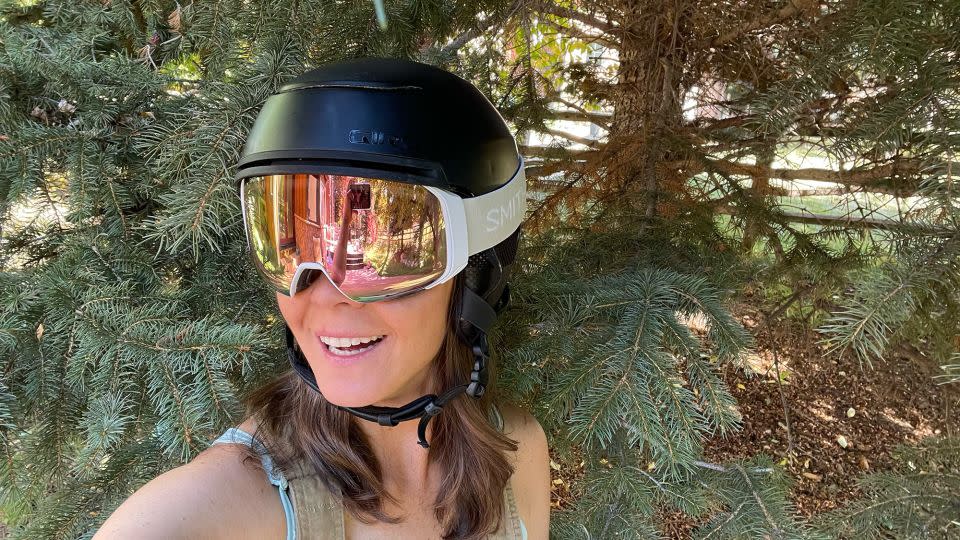
If you have a smaller head, fret no more, because the Smith 4D Mag S goggles are here to fit your face. So often, trendy oversized goggle frames swallow smaller features and leave gaps in coverage (like above the nose or around the eyes) so that air billows inside the goggles. This creates a less-than-ideal skiing experience for women or anyone with petite features. But the 4D Mag S goggles champion our small-headed skiers. During testing, I tried these frames on five different faces — three women and two men — and all proclaimed the fit to be top-shelf. This was in contrast to some of the other goggles with a universal fit — like the Zeal Optics Cloudfall or the Rudy Project Spincut OTG — that felt a bit large on smaller features. Bonus: They’re available in a Low Bridge Fit for those with a lower nose bridge or higher cheekbones.
And, they work with a variety of helmets. I wore these goggles with three ski helmets by three different brands to gauge whether or not they’d set me up with the dreaded gaper gap, a patch of exposed forehead between the top of the goggles and the helmet. Not only is a gaper gap a source of ski hill mockery, but it also leads to oddly bizarre tan lines. Fortunately, the 4D Mag S was the only goggle in the top three, and one of only 14 in our entire testing pool, to sit flush against all three helmets.
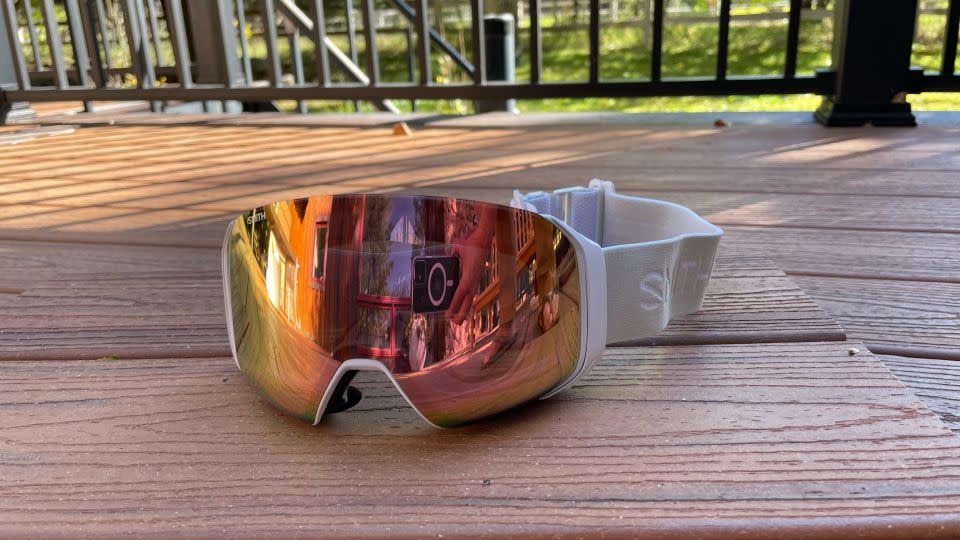
Smith’s BirdsEye Vision is aptly named and I was stoked with how much the lens shape expands the field of vision in these goggles. The 4D Mag S boasts a spherical lens, which means it curves not only horizontally across your eyes, but also vertically to give you extra peripheral vision and less distortion. (Trade-off: It costs more than cylindrical lenses.) Smith also added a curvature along the bottom of the lens that further broadens your field of view. During our testing, we taped an X on the floor and walked towards it until it disappeared. These goggles maintained their peripheral vision longer than almost any other in this test, coming second only to the Zeal Optics Cloudfall.
As with Salomon, the 4D Mag S goggles also come with interchangeable lenses. In this case, you get two lenses with ChromaPop (one regular and one for low-light conditions), a gogglesoc, a goggle bag and a hard-sided case. Thanks to a small turning latch that secures the corners, changing the lenses isn’t quite as easy as the Burton Anon M5S (the easiest of the bunch). But, it is more secure and I’ll never worry about losing my lenses while ragdolling down the slopes.
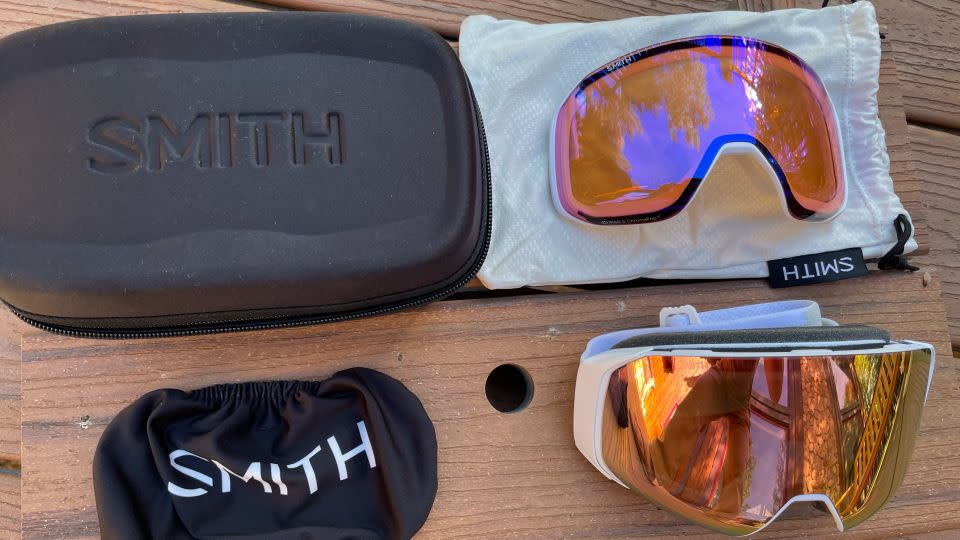
Finally, we’d be remiss if we didn’t give a nod to the sheer styling of these goggles. I was sent a sample with the white vapor strap and rose gold lens, and they may be the most beautiful goggles I’ve ever worn. Even if rose gold pink isn’t your color, Smith offers these goggles in 11 different color options. Chances are good that you’ll find a combination you love.
The Smith 4D Mag S goggles are the best choice for skiers with small faces or features thanks to their secure fit and all-around compatibility with most helmets. Thanks to their outstanding field of vision and relatively easy interchangeable lenses, we placed the Smith goggles as our best pick for small faces.
Best budget ski goggles: Goodr Snow G
$75 at Goodr
$75 at REI
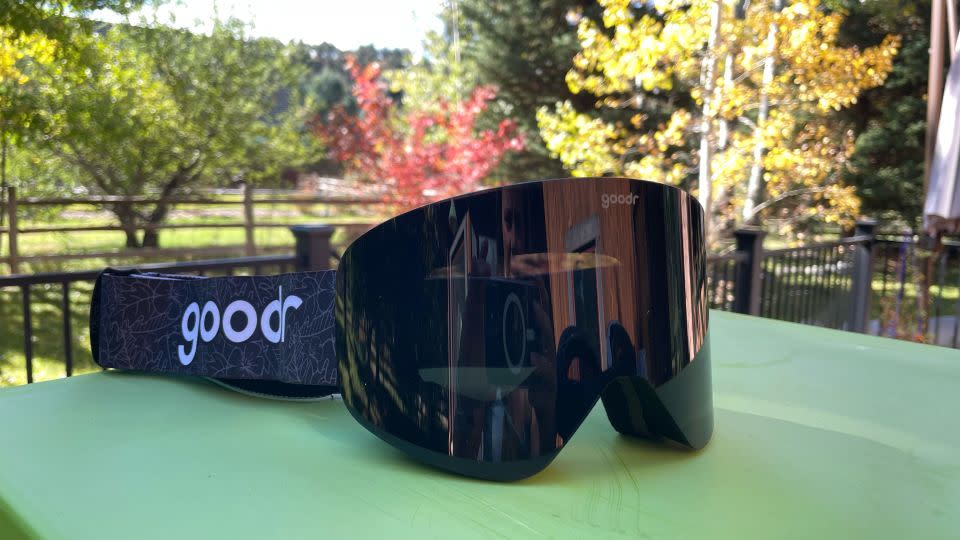
Gone are the days of $25 ski goggles, but not everybody skis enough to warrant a premium, full-service goggle like the Salomon or Smiths above. If that’s you, we can’t recommend the Goodr Snow G goggles enough. We were delightfully surprised by the all-around lens quality, style and included features that come with the Snow G — and for less than half the cost of most goggles in this guide. Sure, there are trade-offs when it comes to peripheral vision, lens clarity and overall quality of foam. But, we’re willing to bet those are concessions that most weekend warriors are willing to make.
For starters, it’s a rarity to get interchangeable lenses at this price. And yet, Goodr comes through. The Snow G include two magnetic lenses: one for bright light and one for low light. Both easily snap onto the frame in a similar fashion to the Anon M5S, which is code for “super easy.” Similar to the Salomon goggles, I was able to make the lens swap while wearing only my liner gloves. There aren’t any levers or snaps to secure the lens and the magnets don’t feel as strong as more expensive frames, but it’s still a nice feature to have available. Plus, the Goodr goggles come with a hard-sided storage case — something that many of the pricier models did not include.
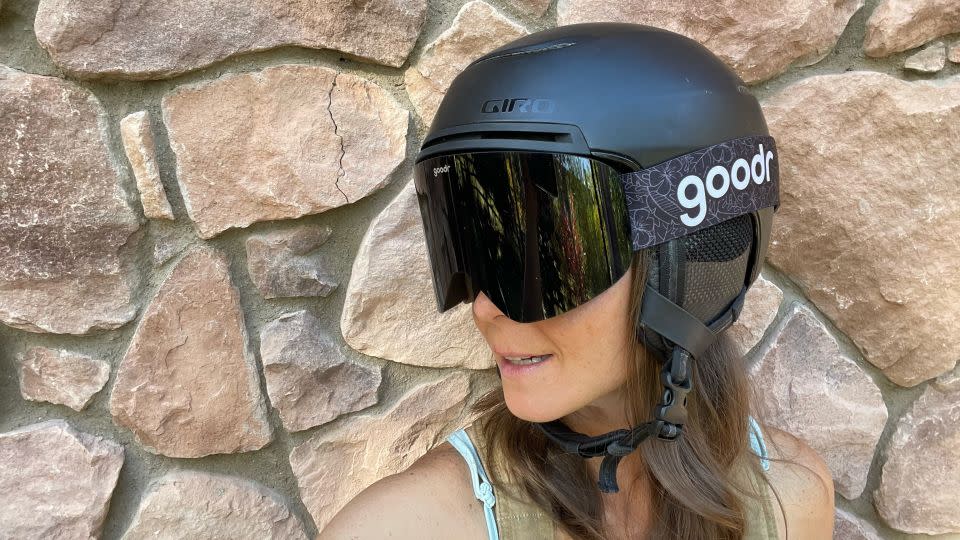
The all-black, frameless design has a sleek aesthetic, but if you want to make more of a statement, Goodr also offers bright pink and orange colorways. And the lenses themselves offer the usual basics that you need while spending hours on snow: anti-fog treatment, anti-glare coating and UV400 protection. Unlike pricier goggles with premium glass by well-reputed companies such as Zeiss, Goodr opts for a more generic lens, and it showed when I was out walking the neighborhood in my goggles. The Snow G goggles don’t have the same clarity and the field of vision is much smaller, but out of the options clocking in at less than $100, they were the best. And can I once again remind you about that price point?
The goggles felt quite hot during my Peloton bike ride, and the foam is much thinner than what’s found on the other goggles in this test; the Dragon DX3 goggles (another budget contender) as well as many of the more expensive goggles we tested have a more cushioned fit against your skin. But, it’s not uncomfortable and the Snow G fogged up less than the Smith Blazer goggles, yet another one of our budget options.
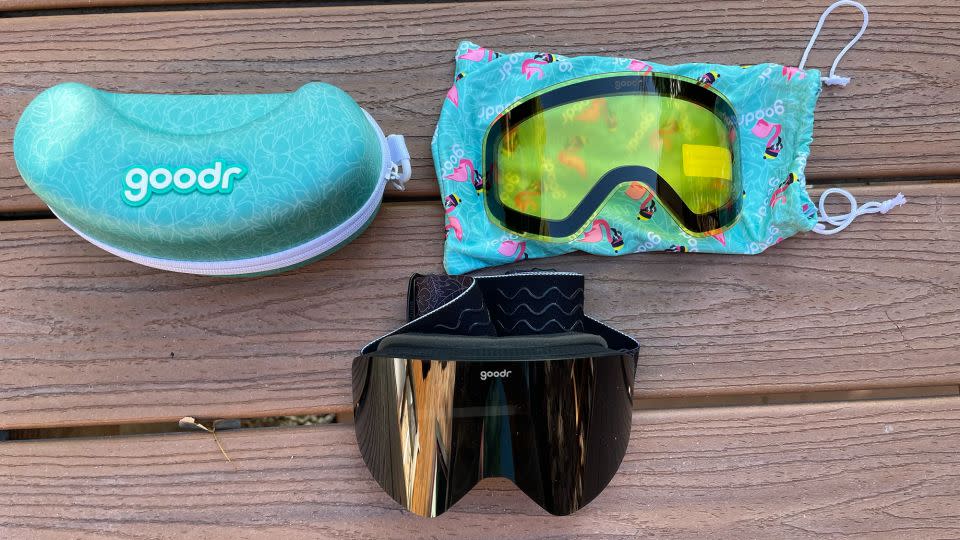
Bottom line: If you ski a handful of times per year or only hit the slopes for one week-long ski vacation per season, reach for Goodr’s Snow G goggles. With decent visibility, comfort, breathability and style, the quality and performance of these goggles is unmatched at this price point.
Everything you need to know about ski goggles
Once upon a time, we all skied in sunglasses. While that’s still technically an option and something that a lot of backcountry skiers still do, ski goggles are now the accepted norm. That’s because goggles protect your eyes from sun, snow, wind, tree branches and other ski-hill hazards — which also makes them invaluable. Because of this, it’s a good idea to understand what to look for when shopping.
First, consider the lens shape. Above, we mentioned two types of lenses: spherical and cylindrical. Cylindrical lenses are flat top to bottom and curved horizontally, like wraparound sunglasses. They can sometimes have more glare and a touch less peripheral vision, but they normally cost less. Spherical lenses are curved both horizontally and vertically, which interferes less with peripheral vision and minimizes lens distortion and glare. However, all good things come at a cost; these cost more.
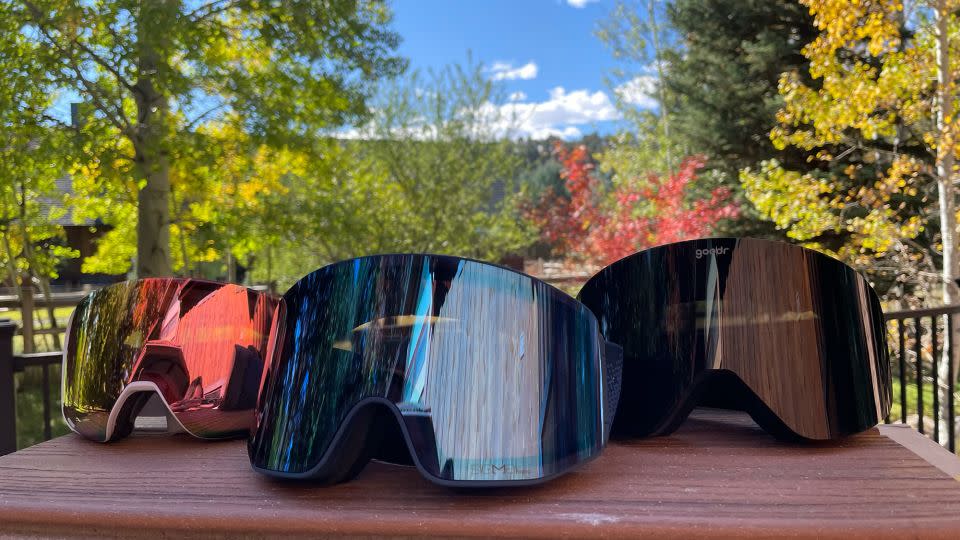
Secondly, you definitely want to consider how well a ski goggle vents. While it may be counterintuitive to think of overheating while playing in the snow, it definitely happens when folks are sedentary and sitting on a chairlift in bright sunlight or stopping for a snack at the top of a run. If the goggles vent poorly, they will likely fog over, which can cause a host of visibility issues on the slopes. When shopping, you’ll want to look for features such as anti-fog coating and vents along the tops and sides of the goggles. You’ll also want to make sure the goggles have double-layered lenses, since those fog up way less than single-layer. These days, almost all ski goggles have double-layered lenses, but it’s a good idea to check.
Interchangeable lenses are pricier, but also way more useful. Since we ski in a variety of conditions, it’s tough to find one lens to do it all. Lighter lens colors are often better on cloudy days while darker lenses are better on sunny, bluebird days. If you have interchangeable lenses, the goggles will likely cost more money, but you can swap them out to accommodate for any light conditions.
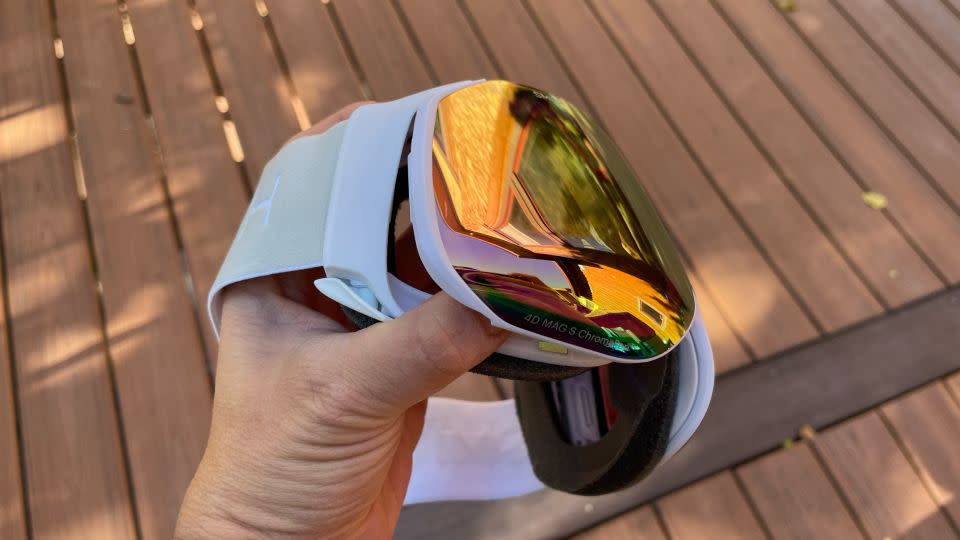
In that same line of thinking, it’s worth evaluating photochromic lenses like the Salomon Sentry Prime Sigma Photochromic or Atomic Four Pro HD. Photochromic lenses are an added feature that automatically adjust their tint according to conditions. The downside of photochromic lenses is that they often take a few minutes to fully adjust to the new conditions.
Finally, keep an eye on all of the features that come with your goggles. Almost all ski goggles come with a microfiber bag for storage, but many are now including hard-sided cases, too. This is particularly nice if you throw your goggles in a ski bag with heavier objects like ski boots or helmets. It makes it less likely that they’ll get scratched or ruined. Many brands will also include gogglesocs, small microfiber covers that stretch over the goggle lenses. And of course, brands like Salomon are also now including magnetic protectors to further discourage lens damage.
How we tested
To find the best ski goggles, we tested everything from comfort to lens clarity and field of vision to ease of use while wearing ski gloves. To do this, we divided testing into four categories: comfort, optics, ventilation and style. From there, we directly compared the features on each pair of goggles through non-standardized outdoor adventure and pre-scripted, standardized tests. Here’s the full breakdown of what we did.
Comfort
Comfort: We tried all the goggles on to see how they felt sitting against our skin.
Fit: We tried the goggles on a minimum of three different faces to see how they fit a variety of head shapes and sizes.
Helmet fit: We also wore the goggles with three different helmets by three brands: Salomon, Flaxta and Giro. We evaluated how they fit with each helmet and whether or not they left a huge gaper gap. We also evaluated how well the strap stayed up on the helmet and whether or not it pulled the goggles too tightly against our face.
Optics
Clarity: We walked around outside in a variety of light conditions to see how clear our vision was and how well the lenses adjusted to the light changes.
Interchangeable lenses: If the goggles came with interchangeable lenses, we timed ourselves on how long it took to swap them out. We also tried doing it while wearing liner gloves and ski gloves.
Field of vision: We taped an X on the floor and walked towards it while wearing the goggles, determining when it disappeared from our line of sight.
Lens smudges: We handled the lenses with our hands and determined how easily they smudged, as well as how easily they were to clean.
Ventilation
Feel: We stood and moved around outside in the sunshine to evaluate how the goggles felt sitting against our skin and to determine whether our face felt hot or clammy.
Breathability: We wore the ski goggles while pedaling on a Peloton at a moderate clip for 10 minutes to determine whether or not the goggles would fog up.
Style
Colors: We counted how many color options the goggles have available for sale on the website.
Versatility: We also looked to see if the goggles were available in various frame sizes or shapes for different faces.
Features: We counted how many additional features (such as extra lenses or hard-sided cases) came with the goggle purchase.
Other ski goggles we tested
Burton Anon M5S
$300 at Burton
We came within millimeters of including these goggles in our top picks; it was a very close competition. We loved the interchangeable lenses on the Anon goggles and found them to be the easiest in this test. We also loved the overall fit and styling. Ultimately, they didn’t make the top three due to price, but if you want a high-performing goggle with the easiest interchangeable lens we tested, go for the M5S.
Atomic Four Pro HD Photo
$230 at Atomic
These Atomic goggles were also a close contender for the top picks due to their high performance and nods to sustainability; they’re made with 30-35% recycled materials. They boast photochromic lenses and the lenses are fairly easy to swap out, although the Anon goggles are easier. And, these don’t come with as many features as the Salomons for the same price point.
Flaxta Prime
$140 at Flaxta
While these goggles are light on features — no case or interchangeable lenses — we were very impressed with how well the lenses worked in a variety of environments, and especially at this price point. We considered adding them as our top pick in the budget category since they do offer better clarity and lens adjustment in varying conditions when compared to the Goodr Snow Gs, but they’re still nearly double the price of the Goodrs. Still, if you want better-quality goggles than the Goodrs but you’re not ready to drop the big bucks for our other top picks, these are a great choice.
Sweet Protection Connor Rig Reflect
$220 at Sweet Protection
For a one-lens goggle, these did amazingly well. We thought the lenses had great clarity and the field of vision was in the top half of those that we tested. We also liked the aesthetics on these goggles; they just look good on your face. But, they cost the same as the Salomons, which include interchangeable lenses and other features that these do not.
Zeal Optics Cloudfall
$199 at Zeal Optics
Hot dang, these are beautiful. The field of vision on the Cloudfall goggles was up there with the Smith 4D Mag S goggles for the best in this test and the Zeiss glass had amazing clarity. We also liked the rail system on the interchangeable lenses; it was unique and fairly intuitive. However, we ran into issues while pairing these goggles with all the helmets. They only fit seamlessly with one helmet and looked super awkward (hello, massive gaper gap!) with the rest.
Dragon NFX Mag OTG
$270 at Dragon
The NFX Mag OTG were another pair of goggles that we really enjoyed wearing. They vented well and the interchangeable lens system was very intuitive; we could even carefully manage it while wearing gloves (although liners were much easier). And we liked the frameless design and how it paired with other helmets. However, they don’t have photochromic lenses or come with a hard-sided case, and we experienced some gapping in the fit, especially above the nose bridge. On their own, none of those are deal breakers — they’re really nice goggles — but they didn’t make the top three because of those exceptions combined with the higher price..
Rudy Project Skermo
$160 at Rudy Project
The Skermo goggles were in the neutral zone for us, but that’s a good thing: We don’t have any major complaints. They look good on a variety of faces and they worked moderately well with two out of the three helmets. The clarity on the lenses was also solid, although the field of vision was smaller than found in our top choices. They’re a good all-around goggle, just not as good as our winners.
Shred Gratify
$220 at Shred
We can get behind the sustainability story with these goggles: 84% of the strap is made from recycled plastic bottles. Unfortunately, the strap is also where we struggled. It felt oddly tight while pulling it over the helmets, and we had to extend it to its full length just to get it to fit our average-size heads. And even then, it felt super tight and a bit uncomfortable. This knocked it out of contention for our top spots.
Rudy Project Spincut OTG
$250 at Rudy Project
The lens clarity was a highlight on the Spincut OTG goggles and they had a nice fit on our face, although we prefer the aesthetic of a frameless goggle. But really, we struggled on the price point for these. They don’t include any added features like photochromic lenses, a case or even interchangeable lenses, yet they are on the higher end of the price range.
Dragon DX3 OTG
$70 at Dragon
We’ll be honest: these were our budget pick until the Goodr Snow Gs arrived at the final hour. For an affordable pair of goggles, the DX3 OTG are a great choice. The field of vision is decent and the goggles had a universal fit that worked on all of our tester’s faces. They even had a better helmet fit when compared to pricier models like the Zeal Optics Cloudfall or the Anon MS5. However, Goodr took the budget spot since its goggles are the same price but include interchangeable lenses and a hard-sided case.
Smith Optics Blazer
$90 at Smith Optics
The Blazer cylindrical lenses have a wide field of view that would make most skiers happy. They performed well on the Peloton, resisting any fogging, and they have a nicer look than you’ll find on a lot of budget-friendly ski goggles. We struggled getting them to fit with a number of our helmets, which is why the Goodr goggles took the top spot in this price category.
Note: The prices above reflect the retailers' listed price at the time of publication.
For more CNN news and newsletters create an account at CNN.com

